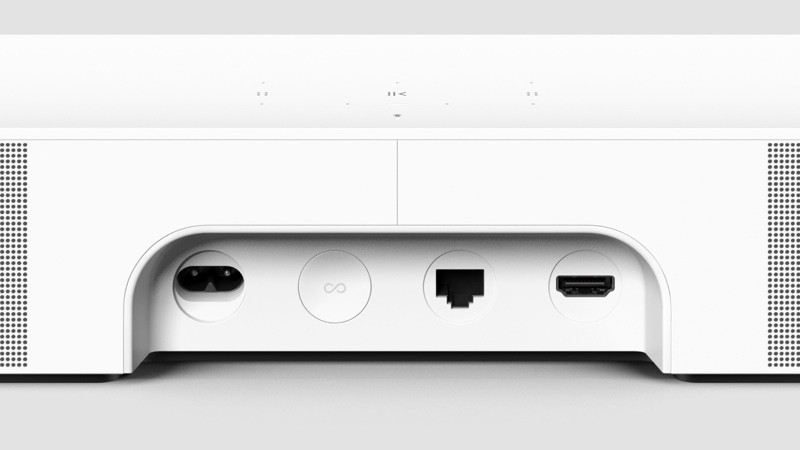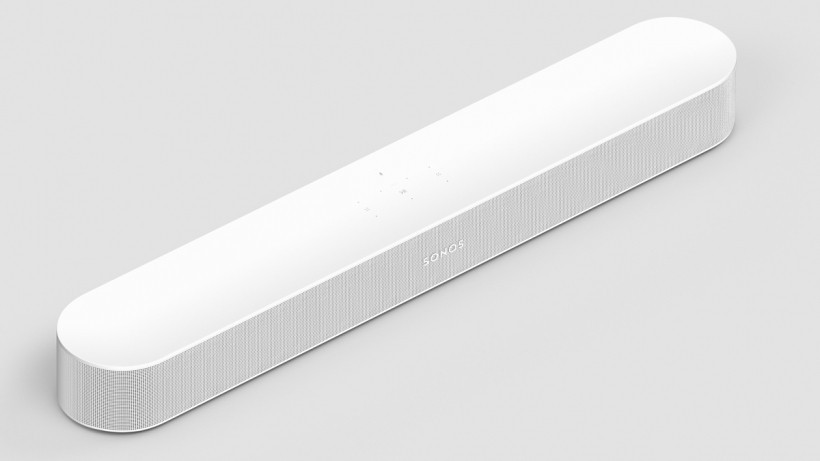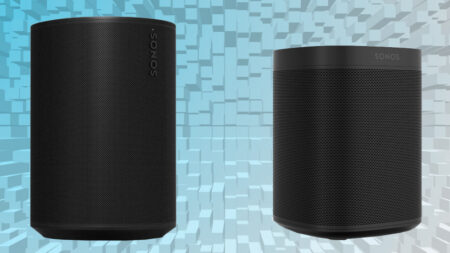Which is the right Sonos soundbar for your TV setup?
If you want to create a home cinema experience, buying a soundbar is a great idea. And there’s no denying that audio tech giant Sonos is a force of nature in this area.
Sonos is well known for creating easy-to-use, stylish soundbars that deliver impressive sound, and it now has a couple of different soundbars on sale, catering for vastly different budgets.
The Sonos Arc is its higher-end offering, while the Beam (2nd-gen) is a more compact smart soundbar that won’t break the bank (as much).
But which should you buy, Sonos Arc or the Sonos Beam 2? To help you make that decision, we compare them on design, features, sound quality, and price.
Read on to find out which is the best soundbar out of the two – or, rather, which one is right for you.

Sonos Arc vs Sonos Beam: Design
The Sonos Arc went live last year as the flagship Sonos soundbar, channeling and channels the sophisticated yet simple design language of Sonos speakers. It sports a matte finish that comes in either black or white, and small circular acoustic perforations running the speaker’s whole length.
The Arc is on the larger side at 45 x 4.5 x 3.4 inches. It’s only really suitable for being placed under a large flat-screen television and will look strange in any other part of your house (although technically could be placed above your TV).
Read this: The best smart speakers
The Beam 2, like the original, is a much smaller affair – measuring just 26 inches in width and 2.7 inches in height, so you shouldn’t struggle to find somewhere to place it in your home. And if you place the Beam under your TV, it shouldn’t affect your viewing experience.
It’s not exactly the same design as the original Beam though; the fabric look has been ditched in favor of a monochromatic aesthetic with a perforated polycarbonate grille – like the one you get on the Arc.
Sonos states this is not only better for sound but is easier to clean. The Beam, like the Arc, comes in two color choices: white and black.
It too is designed to be wall mounted as well as being at home on or in a TV-cabinet.
Back to the Arc and, thanks to a rubber base, you can put it on flat surfaces but you also have the option of mounting the soundbar on your wall by using the screw holes that sit at the back. A wall mount for the Arc will set you back an additional £69.

In a rear recess on the back of the Arc, you’ll find a mains power socket, an Ethernet port, an HDMI eARC port, and a button for setting up your speaker.
Sonos has neatly placed several touch controls at the top of both speakers. These are for playing/pausing, increasing/decreasing volume, as well as skipping tracks forwards or backwards.
The top surfaces also contain far-field mics for controlling the speaker with your voice – you can choose to have either the Google Assistant or Alexa at your beck and call with either option.
Guide: Sonos speakers and Amazon Music HD
While the original Beam boasted an HDMI port, it wasn’t eARC like the Arc but that has been rectified for the 2021 sequel.
In case you’re not aware exactly what that means, eARC stands for enhanced Audio Return Channel. It’s an HDMI format that is designed for high-resolution sound signals, such as Dolby Atmos.

The big difference between eARC and ARC is bandwidth and speed, with the enhanced version having a much much higher bandwidth than its predecessor.
With both of Sonos’ soundbars, if you connect to your TV with eARC, you’ll get the full range of Dolby home audio action, such as Dolby Atmos, TrueHD, MAT, Dolby Digital Plus and Dolby Digital.
Both soundbars can also be hooked up to your TV using an optical cable (and an adapter).
Sonos Arc v Sonos Beam: Features
The Sonos Arc comes with 11 speaker drivers, each of which has its own Class D amplification block. What’s more, you’ll find a mid/bass driver at both ends of the Arc for offering sonic width, some looking up to the ceiling for delivering the impression of height, and four more at the front. The latter don silk-dome tweeters, too.
Using the Sonos control app (S2 version), you can integrate Google Assistant or Amazon Alexa voice control. This app also makes it easy to use different streaming services with your Arc, offering hundreds at your fingerprints, and create your very own Sonos multiroom speaker system.
Meanwhile, Bluetooth setup means you can get the Arc up and running smoothly. It’s also worth pointing that you can set up eARC for Dolby Atmos action; the latter obviously being the ‘big thing’ in home audio at the moment.
The 2nd-gen Beam has five Class-D digital amplifiers, a single tweeter in the middle for a crisp, high frequency response, three passive radiators for the low end and four elliptical midwoofers.
The five speaker array allows the Beam to pump out Dolby Atmos using psycho-acoustic techniques, courtesy of new software, powered by a CPU that is 40% faster than the first-gen Beam.
Another new addition to the Beam 2 simple setup using NFC, so you can get it added to your Sonos system in quick time.
Sonos showdown: Sonos Move vs Sonos One
Both the Arc and the Beam are AirPlay 2 speakers and, should you have an Amazon Fire TV, you can even use Alexa to play certain TV shows, pause it if you need the toilet, and search for something to watch.

Sonos Arc v Sonos Beam: Sound quality
Given that we’re comparing two soundbars, sound quality is obviously important. What we love about the Arc is that it offers a soundstage which supersedes its physical size, making it a very capable soundbar for home cinema.
Overall, the Arc provides an excellent sonic impression. The speaker has crisp clear tonal sounds and impresses regarding coherence, detail retrieval, and straightforward fidelity. Play some music, and the sound quality is equally as decent.
How does the Sonos Beam compare? Well, we’ll have to let you know. We’re currently in the process of reviewing the 2nd-generation Beam and we’ll update this guide with our findings in the coming weeks.
It’s worth noting that, with both the Beam and the Arc, you can also create a dedicated 5.1 TV surround system from within the Sonos app.
While the Arc itself is capable of a 5.0.2 surround sound stage, you can eliminate the virtual parts by adding dedicated rear speakers and a Sonos Sub.
In fact, if you just add a Sub to either an Arc or a Beam, that’s a 3.1 system right there and Sonos actually sells 3.1 bundles with these setups for $1,499 – that price is for a Beam-based system, you’ll pay a bit more to get an Arc involved.
To get to 5.1 you need to add a couple of rear speakers and you can do this with either a pair of Sonos Ones or One SLs, or even a pair of the Ikea Sonos speakers.
Looking for a Sonos 7.1 system? You’re out of luck, there’s no official way of doing this at present.
Sonos Arc v Sonos Beam: Price
When it comes to price, both soundbars are pretty much at either end of the scale.
While the Arc retails at an eye-watering £799, the Beam is a lot cheaper at £449.

Sonos Arc v Sonos Beam: Which is the best?
Out of the two, the Sonos Arc is the higher end speaker and certainly lives up to its lofty price tag. You’re getting a great home cinema experience but without the burdens of a bulkier surround-sound system. At the same time, it offers a premium build and is very easy to use.
Of course, not everyone is going to be in a position to pay nearly £800 for a soundbar – nor have the room to accommodate it.
That’s where Sonos hopes to help with the Beam, its mid-range soundbar that won’t blow a hole in your bank account. While it’s not as powerful as Arc, it sounds and looks great.
So which is the best? This will depend on what you want, to be honest. If you have the money to spend on a high-end soundbar, you won’t disappointed with the Arc.
However, the Beam is still a great choice and is a lot more affordable… although if you want to go even cheaper there is also now the option of Sonos’ cheapest ever soundbar – the Sonos Ray.





